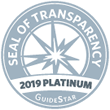BACKGROUND
Thyroid hormone plays an important role in baby’s development during pregnancy. During the critical period of development in early pregnancy, the mother’s thyroid gland provides all the thyroid hormone needed for the baby. Therefore, it is important for pregnant women to have normal thyroid hormone levels. The most common type of thyroid abnormalities in pregnancy is subclinical hypothyroidism, a mild form of low thyroid hormone levels where the thyroid stimulating hormone (TSH) level is high but the free thyroxine (FT4) level is normal. This affects 3.5-14.4% of pregnancies, depending on the region of the world. Although subclinical hypothyroidism has been linked adverse pregnancy outcomes such as miscarriage and preterm delivery, it is not clear whether treatment with levothyroxine is always helpful. The current American Thyroid Association guideline has different recommendations for treatment of subclinical hypothyroidism in pregnancy based on thyroid peroxidase antibody (TPOAb) status and TSH levels.
Therefore, the authors of this study investigated possible impact of levothyroxine treatment of subclinical hypothyroidism in pregnancy divided into different TPOAb status and TSH levels.
THE FULL ARTICLE TITLE
Gao S et al. Levothyroxine treatment in pregnant women with thyroid stimulating hormone levels ranging between 2.5 and 10 mIU/L: A propensity score matched analysis. Thyroid . Epub 2024 Apr 26; doi: 10.1089/ thy.2023.0662. PMID: 38666684.
SUMMARY OF THE STUDY
Data from 4370 Chinese pregnant women from the China Birth Cohort Study were included. Women with pregnancies with a single baby and no history of thyroid disease were previously recruited between 6-14 weeks of pregnancy and had TSH, FT4, and TPOAb levels measured. The participants were divided into four subgroups according to TPOAb status and TSH level: subgroup A (TSH 2.5-4.0mIU/L and TPOAb negative), subgroup B (TSH 4.0-10.0mIU/L and TPOAb negative), subgroup C (TSH 2.5-4.0mIU/L and TPOAb positive), and subgroup D (TSH 4.0-10mIU/L and TPOAb positive).



